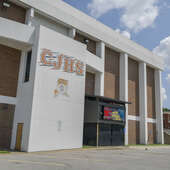What you should know about a Home Equity Line of Credit
Thursday, April 25, 2019

A Home Equity Line of Credit, or HELOC for short, is a revolving line of credit that uses your home as collateral. The equity that you have in your primary home increases as you pay down your mortgage and your home value rises.
When a homeowner needs money to help cover expenses, a HELOC may be a beneficial option. Once you have built up equity in your home, you may be able to use it for items such as:
* Debt consolidation
* Home improvements
* College tuition
* Vacation
When applying for a HELOC, your lender will determine how much equity you have in your home based on what you owe and its appraised value. Whether or not you are approved will also depend on your income, your outstanding debts and your credit score.
An example would be if your current primary home appraises for $150,000 and you owe $100,000 on the mortgage. You could be eligible for a home equity line of credit up to $50,000.
Borrowing and repayment schedules also vary. A HELOC works similar to that of a credit card as you’re given a line of credit that’s available for a set time frame that you can withdraw money as you need it. Payments are set up with an interest-only payment due monthly with an auto debit.
As you pay off the principal, your credit revolves and you can use it again. So for example, let’s say you have a $20,000 HELOC and you borrow $10,000. You then pay back $3,000 toward the principal so you now have $13,000 in available credit.
Home equity lines of credit come with a variable interest rate. Your payment will vary depending on the interest rate and your balance.
A HELOC is a great tool to utilize for unexpected or larger expenses. We help our borrowers determine if a HELOC is beneficial for them and make sure they understand all the facets of the program.
Equal Housing Lender - Member FDIC
Tina McRaven is a mortgage originator for Montgomery Bank.



























